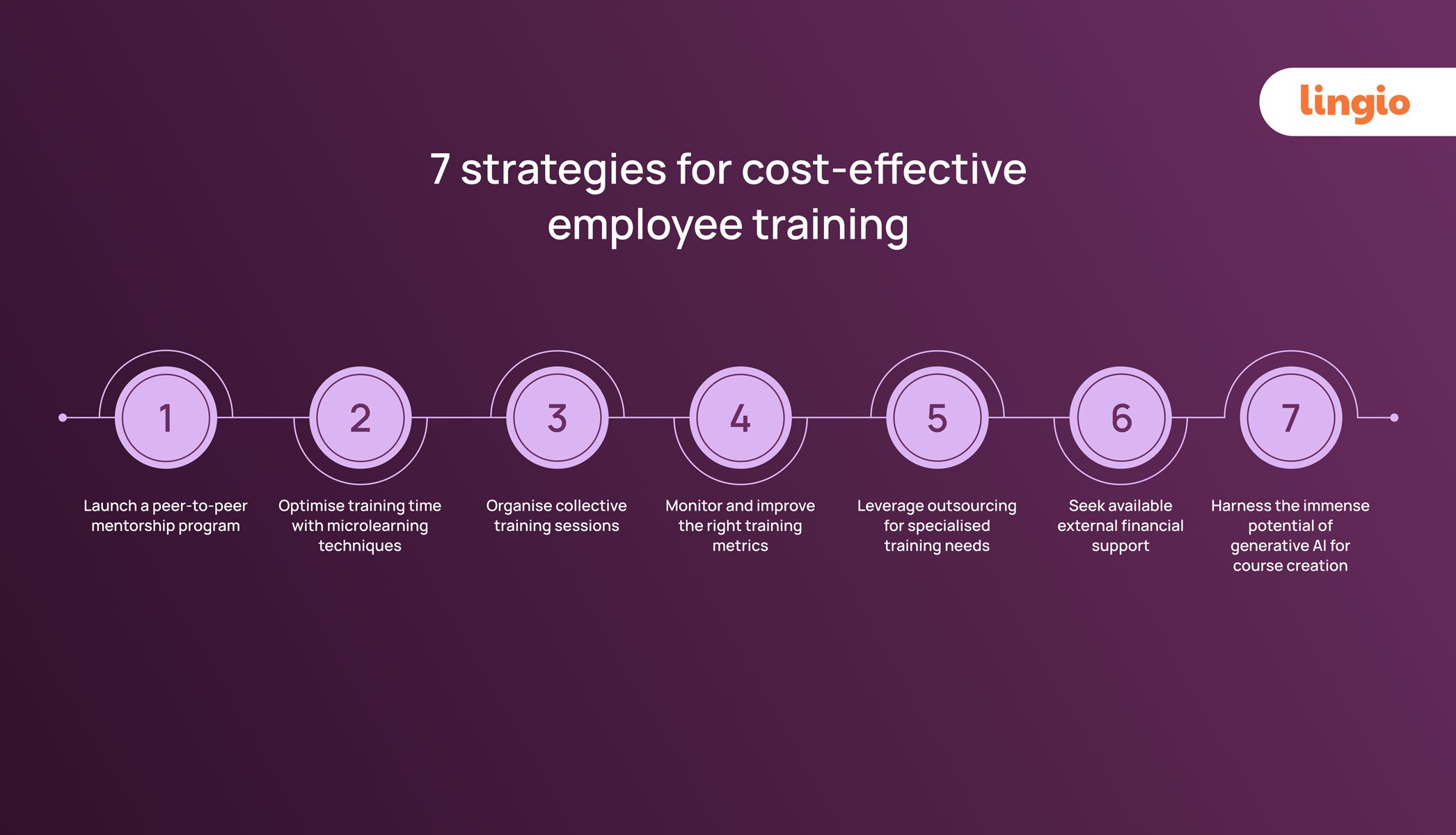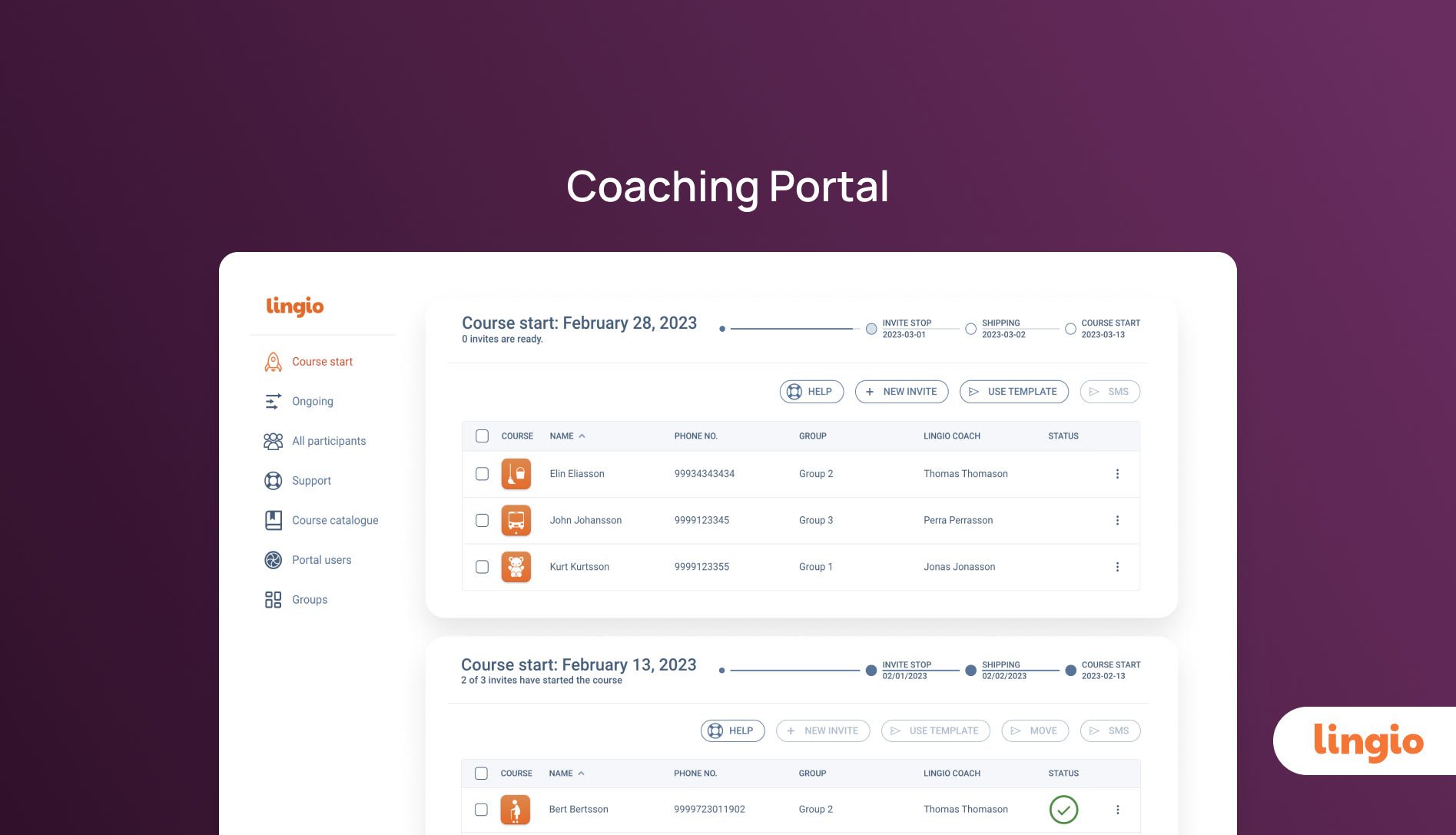7 Strategies for cost-effective employee training: Maximising impact, minimising expense
Organisations can significantly reduce training costs by adopting smart strategies and leveraging the latest technologies while ensuring high-quality learning experiences. The following tips offer practical ways to balance this, ensuring your training programs are financially sustainable and impactful.

1. Launch a peer-to-peer mentorship program
Implementing peer-to-peer learning in your employee training strategy is an exceptionally cost-effective choice. It eliminates the need for expensive external consultants and traditional training programs, allowing you to practically leverage your in-house experts to educate and mentor others for free. Additionally, this method fosters a collaborative, on-the-job training environment and strengthens team bonds.
To ensure smooth execution, it's crucial to match mentors and mentees appropriately, set clear objectives, and guide mentors on effectively sharing their knowledge.
2. Optimise training time with microlearning techniques

In optimising training time, microlearning emerges as a practical solution. If you're wondering, what is microlearning?, it's a learning technique that focuses on breaking down complex subjects into smaller, manageable chunks to enhance learning efficiency and engagement. This approach usually conducted online via a mobile device is cost-effective, reducing the need for lengthy and resource-intensive training sessions.
While microlearning might not cater to every training requirement, particularly those demanding comprehensive understanding, its integration with conventional training methodologies can yield a well-rounded, impactful, and time-efficient training experience.
3. Organise collective training sessions
Group training sessions are a strategic way to deliver efficient and cost-effective employee development. By training multiple employees at once, organisations optimise resource usage and foster a collaborative learning environment. These sessions reduce the per-staff cost and ensure a consistent learning experience across the team.
Key to their success is tailoring content to suit the group's collective needs, encouraging active participation through interactive methods, and being mindful of group dynamics to maintain an inclusive learning atmosphere. While group training efficiently enhances teamwork and communication skills, it's important to balance this approach with individual learning preferences, possibly integrating additional support or alternative training methods for comprehensive employee development.
4. Monitor and improve the right training metrics

Monitoring and evaluating training effectiveness is critical in ensuring that the investment in employee development yields the desired results. Utilising platforms like Lingio’s AI-powered learning platform, with its intuitive coaching portal, organisations can accurately track employee training progress and outcomes. This strategic approach enables data-driven insights, fostering continuous improvement in training programs.
Key to this process is setting clear metrics and goals for each training program, coupled with the technology for comprehensive tracking and reporting.
5. Leverage outsourcing for specialised training needs
Embracing outsourcing for specialised training is a strategic decision that can effectively supplement internal capabilities, particularly when in-house expertise is stretched or lacks specific skills. This approach is crucial for addressing complex or rapidly evolving subjects, allowing organisations to access external expertise and the latest industry practices.
Clearly defining your training needs and objectives is crucial to maximise the benefits of outsourcing. This involves thoroughly assessing the areas where your organisation needs external expertise. Partnering with reputed training providers who have demonstrated excellence in these fields ensures quality learning experiences. It's also important to align the outsourced training content with your organisational culture and goals, creating a seamless integration with your existing training frameworks.
6. Seek available external financial support
Exploring external financial support options such as grants, subsidies, and funding initiatives can be a game-changer for your organisation's training programs. This approach alleviates financial constraints and enables more ambitious and diverse training initiatives. Governments, non-profits, and large corporations often announce funding opportunities for workforce upskilling. For example, in November 2023, the US Department of Labor announced a $98 million fund to support academic and skills training for young people. Similarly, the European Union offers various funding instruments for upskilling and reskilling, detailed here.
Organisations must stay informed about relevant funding opportunities to leverage effectively, understand their eligibility criteria, craft compelling applications aligning with the funders’ objectives, and adhere to strict application timelines. By proactively seeking and securing such financial support, organisations can significantly ease the financial burden of training, enabling them to offer more comprehensive and diverse training programs while maintaining fiscal responsibility.
7. Harness the immense potential of generative AI for course creation with Lingio
Developing training materials is a major part of direct training costs, often requiring extensive time and resources. Traditional course creation demands significant planning and manual effort. However, the advent of generative AI marks a paradigm shift, offering a way to cut down both time and expenses in course development drastically.
Enter Lingio - Your solution to cost-effective and (near) instant training content

Lingio isn't just another course creation tool. It's a breakthrough in AI-powered training material development trusted by major corporations and public authorities, including Nobina, the Nordic region’s largest public transport operator. Lingio leverages generative AI to transform traditional training content into interactive, mobile-friendly courses in seconds, saving substantial time and resources for L&D teams.
Key capabilities of Lingio include:
- Superfast course creation: Effortlessly upload training content to Lingio for an instant, engaging course generation with AI-powered questions and imagery. Curious to try it? Check out our guide on how to create a course with AI.
- Gamified learning: Lingio integrates gamification developed by experts with EA Games and Spotify backgrounds, offering interactive, enjoyable learning experiences through storylines and quizzes.
- Exceptional completion rates: Lingio’s courses, shaped by expert input, achieve 12 times higher completion rates than standard market offerings.
- Mobile-first: Tailored for the on-the-go workforce, Lingio’s mobile-first courses suit industries with deskless employees, providing convenient access across devices.
- Accurate, reliable AI: Utilising trusted sources and editable AI-generated content, Lingio ensures precision and relevance in course materials.
- Coaching portal for measurable impact: With its mobile-friendly design, Lingio’s coaching portal tracks training effectiveness, ensuring engagement and insightful outcomes.
- Multilingual support: Overcoming language barriers, Lingio translates key terms into 100+ languages, backed by a partnership with IAAP for comprehensive accessibility.
The Nobina success story: Pioneering cost-efficient material development with AI

Nobina's shift to Lingio's AI-driven training platform marked a significant stride in cost-efficient and effective training. By converting their employee handbook into gamified, mobile-friendly courses, Nobina enhanced the learning experience and significantly cut down on training costs.
Lena Haenel, Head of Training at Nobina, encapsulates the impact: “Ever since Lingio helped bring our e-learning vision to life, the onboarding process for our bus drivers has become incredibly smooth and streamlined. Sharing training and monitoring our staff's progress is easier than ever.”
Key takeaway: The partnership between Lingio and Nobina demonstrates the immense potential of AI-powered solutions in reducing costs while improving training effectiveness. The success of this project serves as an example for organisations looking to modernise their training programs cost-efficiently. You can try out Lingio for free today!










